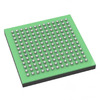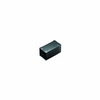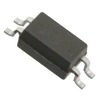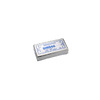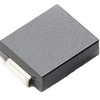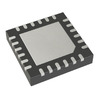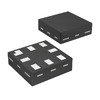HomeBlogSR Flip-Flop Knowledge Guide—Working Principle, Advantages, Disadvantages, Truth Table, and Differences from RS Flip-Flop
SR Flip-Flop Knowledge Guide—Working Principle, Advantages, Disadvantages, Truth Table, and Differences from RS Flip-Flop
A flip-flop is simply a term that refers to a digital electronic device, which is an electronic component used to store a single bit of information.
The SR flip-flop (Set-Reset flip-flop) is a basic component of digital electronic circuits used for storing and manipulating data. It operates in a sequential manner. SR flip-flops can be constructed using SR latches. A latch is a digital electronic circuit that takes the simple form of a storage element, capable of storing one bit of binary information (0 or 1). In this article, we will discuss the SR flip-flop, including its working principle, truth table, advantages, disadvantages, and differences from the RS flip-flop.
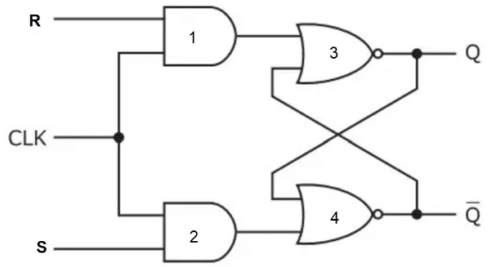
Catalog
1. SR Flip-Flop Working Principle
The simplest RS flip-flop can be built using two 2-input NOR gates, as shown in the diagram:
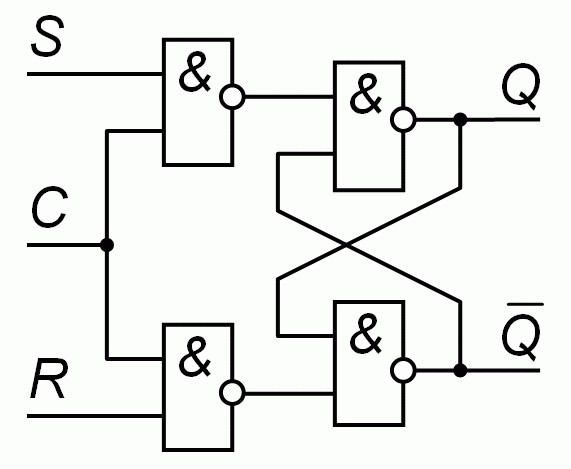
Please note that the way the elements are connected ensures that they are always in opposite states. If the output of the first element is 1, then the output of the second element will be 0, and vice versa.
For ease of understanding, here are the four scenarios that can occur with an SR flip-flop:
Scenario 1: S=0, R=0
Gate Output: Both Gate1 and Gate2 output 0. State Maintenance: Since Gates 3 and 4 are NOR gates, with one input at 0, their outputs depend on the second input. Thus, Gate3/Q(n+1) retains the previous state Q, and Gate4/Q(n+1)' retains the complementary state Q'.
Scenario 2: S=0, R=1
Gate Output: Gate1 outputs 1 (since R is high), Gate2 outputs 0. Reset Operation: For Gate3, one input is high (from Gate1), leading to an output of 0 via the NOR operation, thus resetting the state. However, one input to Gate4 remains low, outputting 1, indicating the complementary state.
Scenario 3: S=1, R=0
Gate Output: Gate1 outputs 0, Gate2 outputs 1 (since S is high). Set Operation: At this time, Gate3 outputs 1 (the other input from Gate1 is low), setting the flip-flop. Conversely, due to the high input from Gate2, Gate4 outputs 0, affirming the complementary state.
Scenario 4: S=1, R=1
Gate Output: With both inputs high, both gates output 1. Invalid State: When both inputs are high, Gates 3 and 4 both output 0, resulting in a conflict because Q(n+1) and Q(n+1)' should be complementary outputs, but this is not the case, leading to this state being invalid.
2. SR Flip-Flop Truth Table
|
S |
R |
Q(n+1) |
State |
|
0 |
0 |
Qn |
No change |
|
0 |
1 |
0 |
RESET |
|
1 |
0 |
1 |
SET |
|
1 |
1 |
X |
INVALID |
We will use this truth table to write the characteristic table for the SR flip-flop. In the truth table, you can see two inputs, S and R, and one output, Q(n+1). However, in the characteristic table, you will see three inputs, S, R, and Qn, and one output, Q(n+1).
From the logic diagram, it is clear that Qn and Qn' are two complementary outputs, also acting as inputs to Gates 3 and 4, so we consider Qn, the current state of the flip-flop, as an input, and Q(n+1), the next state, as an output.
After writing the characteristic table, we will draw a 3-variable K-map to derive the characteristic equation.
3. Characteristic Table
|
S |
R |
Qn |
Q(n+1) |
|
0 |
0 |
0 |
0 |
|
0 |
0 |
1 |
1 |
|
0 |
1 |
0 |
0 |
|
0 |
1 |
1 |
0 |
|
1 |
0 |
0 |
1 |
|
1 |
0 |
1 |
1 |
|
1 |
1 |
0 |
X |
|
1 |
1 |
1 |
X |

From the K-map, you get two pairs. After solving both, we obtain the following characteristic equation:
Q(n+1) = S + R'Qn
4. Advantages of SR Flip-Flop
Using SR flip-flops has several advantages. Below are some of them:
- Simplicity: The design of SR flip-flops is relatively simple, consisting only of a few gates. They can be easily integrated into larger circuits without complicating the overall design.
- Speed: SR flip-flops operate at high speed. They can switch quickly between set and reset states with no delay, ensuring that digital systems can perform tasks more efficiently, thereby improving the performance of technologies that rely on rapid data processing.
- Low Power Consumption: SR flip-flops consume very little power, making them ideal for use in battery-powered devices, such as mobile phones and portable computing devices, while also meaning lower operational costs in terms of energy use.
- Bistable Operation: SR flip-flops can indefinitely maintain a state (set or reset) until an input signal prompts a change, and the ability to maintain a stable state without constant input makes SR flip-flops useful for various applications.
5. Limitations of SR Flip-Flops
Despite several advantages, SR flip-flops also have some limitations. Below are some of them:
- Race Conditions: SR flip-flops are susceptible to race conditions where the output state may change unpredictably due to changes in the timing of input signals, potentially leading to errors or unexpected outcomes.
- Invalid State: An inherent limitation of SR flip-flops is their behavior when both the set (S) and reset (R) inputs are active simultaneously. In this case, the flip-flop enters an invalid state, often resulting in both outputs being high or low, which violates the basic operating principle of a bistable device. This invalid state can disrupt the normal function of digital circuits, leading to unpredictable system behavior and potential data loss.
- Limited Scalability: SR flip-flops may be difficult to scale to more complex digital systems as the complexity of the system increases, the likelihood of introducing errors due to the basic nature of SR flip-flops also increases.
6. Application Areas
- Control Systems: In control systems, SR flip-flops can achieve smooth transitions between signals, thereby minimizing accident risks and improving traffic flow. A common application is in traffic light control systems, where SR flip-flops help manage the sequence of traffic lights, ensuring signals change in a precise and orderly manner, thereby safely and efficiently controlling traffic flow.
- Memory Storage: SR flip-flops are also fundamental components of memory storage devices such as registers. They are used to temporarily store data in computing devices ranging from microprocessors to digital signal processors, allowing for quick access and manipulation of data during processing tasks.
- Digital Counters: SR flip-flops are used in digital counters for counting operations, allowing for incrementing or decrementing based on input signals.
- Data Synchronization: SR flip-flops are crucial for synchronizing data signals between two digital circuits, ensuring they operate simultaneously within the same clock cycle, which is very helpful for maintaining the reliability of communication networks.
- Oscillators: When combined with other components, SR flip-flops can form simple oscillators that produce periodic signals. This is particularly useful in applications like clock circuits and audio signal generators where consistent and stable signal generation is needed.
7. Differences between SR and RS Flip-Flops
|
Feature |
SR Flip-Flop |
RS Flip-Flop |
|
S=0,R=0 |
Q state (no change) maintained. |
Q state (no change) maintained. |
|
S=0,R=1 |
Reset (Q=0) |
Reset (Q=0) |
|
S=1,R=0 |
Set (Q=1) |
Set (Q=1) |
|
S=1,R=1 |
Set (dominant) (Q=1) |
Reset (dominant) (Q=0) |
|
Advantages: |
When S and R are both 1, the set operation
takes precedence. |
When S and R are both 1, the reset operation
takes precedence. |
About us
ALLELCO LIMITED
Read more
Quick inquiry
Please send an inquiry, we will respond immediately.
→ Previous
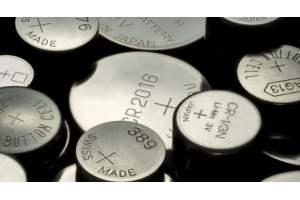
Often overlooked but highly significant, AG1 batteries energize a variety of devices from everyday gadgets to medical equipment. AG1 batteries, available in both alkaline and silver oxide variants, meet diverse needs by providing different voltage outputs and stability levels. The alkaline version, ...

Understanding your car's battery capacity and how it performs under a variety of conditions is important for any car owner, especially when faced with extreme weather challenges. The Cold Cranking Amps (CCA) rating is an indispensable measure for gauging a battery’s capability to start an engine in...
→ Next

AG1 Battery Equivalent Replacements
on April 27th

How Much Do You Know About CCA?
on April 26th
Popular Posts
-

What is GND in the circuit?
on January 1th 2933
-

RJ-45 Connector Guide: RJ-45 Connector Color Codes, Wiring Schemes, R-J45 Applications, RJ-45 Datasheets
on January 1th 2494
-

Fiber Connector Types: SC Vs LC And LC Vs MTP
on January 1th 2083
-

Understanding Power Supply Voltages in Electronics VCC, VDD, VEE, VSS, and GND
on November 8th 1883
-

Comparison Between DB9 and RS232
on January 1th 1759
-

What Is An LR44 Battery?
Electricity, that ubiquitous force, quietly permeates every aspect of our daily lives, from trivial gadgets to life-threatening medical equipment, it plays a silent role. However, truly grasping this energy, especially how to store and efficiently output it, is no easy task. It is against this background that this article will focus on a type of coin cell battery that may seem insignificant on the...on January 1th 1710
-

Understanding the Fundamentals:Inductance Resistance, andCapacitance
In the intricate dance of electrical engineering, a trio of fundamental elements takes center stage: inductance, resistance, and capacitance. Each bears unique traits that dictate the dynamic rhythms of electronic circuits. Here, we embark on a journey to decipher the complexities of these components, to uncover their distinct roles and practical uses within the vast electrical orchestra. Inductan...on January 1th 1651
-

CR2430 Battery Comprehensive Guide: Specifications, Applications and Comparison to CR2032 Batteries
What is CR2430 battery ?Benefits of CR2430 BatteriesNormCR2430 Battery ApplicationsCR2430 EquivalentCR2430 VS CR2032Battery CR2430 SizeWhat to look for when buying the CR2430 and equivalentsData Sheet PDFFrequently Asked Questions Batteries are the heart of small electronic devices. Among the many types available, coin cells play a crucial role, commonly found in calculators, remote controls, and ...on January 1th 1541
-

What Is RF and Why Do We Use It?
Radio Frequency (RF) technology is a key part of modern wireless communication, enabling data transmission over long distances without physical connections. This article delves into the basics of RF, explaining how electromagnetic radiation (EMR) makes RF communication possible. We will explore the principles of EMR, the creation and control of RF signals, and their wide-ranging uses. The article ...on January 1th 1537
-

CR2450 vs CR2032: Can The Battery Be Used Instead?
Lithium manganese batteries do have some similarities with other lithium batteries. High energy density and long service life are the characteristics they have in common. This kind of battery has won the trust and favor of many consumers because of its unique safety. Expensive tech gadgets? Small appliances in our homes? Look around and you'll see them everywhere. Among these many lithium-manganes...on January 1th 1504



